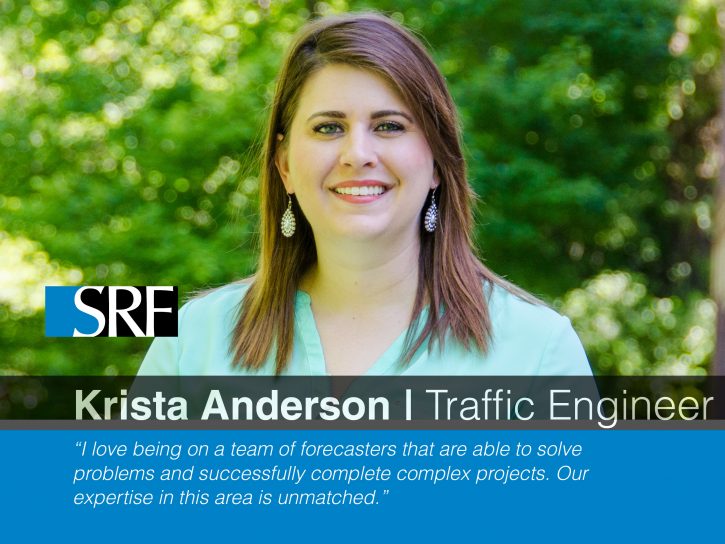June 23, 2017 is International Women in Engineering Day. A day to celebrate the amazing careers in engineering and technical roles for girls, and recognize the achievements of our outstanding women engineers. In celebration of SRF’s women engineers, each day this week we are showcasing a valuable member of our engineering team.
Krista Anderson | Traffic Engineer
Joined SRF: 2013
Education:
Bachelor of Science, Civil Engineering, University of Minnesota
What are a few of your favorite hobbies outside of work?
My boyfriend and I just bought our first house this spring, so one of my new favorite things to do outside of SRF is work on the house. I also enjoy going up north to my family’s cabin, fishing/boating, playing sand volleyball, and hanging out with friends. I volunteer with a local animal rescue, so I spend my weekends fostering dogs.
Why did you decide to study engineering?
Both my dad and grandfather were engineers, and my mom works in IT, so I have always had an interest in Science, Technology, Engineering, and Math (STEM) classes. I started as a mechanical engineer major, but decided to switch to civil engineering after my sophomore year.
How did you get started in the field?
I started as a co-op student in the Traffic Studies group at SRF in January 2013. I became full-time employee a year later.
Tell us about your role at SRF.
I work in the Forecasting subgroup of the Traffic Studies group. I help develop travel demand models and produce transit and traffic forecasts for the Twin Cities metro area, Wisconsin, and North Dakota.
What’s the most rewarding part of your job?
I love being on a team of forecasters that are able to solve problems and successfully complete complex projects. Our expertise in this area is unmatched.
What project are you the proudest of, or has been your favorite?
Working on the Williston Travel Demand Model in 2014. This was the first model that I developed (rather than just applied). More recently, I’ve been working to develop county models for four of the seven metro counties based on the new Metropolitan Council Activity Based Model.
Did you face any challenges as a woman in engineering, if so what were they?
I think the biggest challenge that we women face is ourselves, and learning to be confident in who we are, and being brave enough to risk criticism.
What advice would you give to a female engineer entering her career?
Find a female mentor whom you look up to, and just spend time around her whether it’s in the office, out for drinks, or at professional meetings, and learn from how she handles herself in the different situations. Constantly set goals for yourself to work toward.


